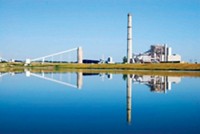Advertisement
Grab your lab coat. Let's get started
Welcome!
Welcome!
Create an account below to get 6 C&EN articles per month, receive newsletters and more - all free.
It seems this is your first time logging in online. Please enter the following information to continue.
As an ACS member you automatically get access to this site. All we need is few more details to create your reading experience.
Not you? Sign in with a different account.
Not you? Sign in with a different account.
ERROR 1
ERROR 1
ERROR 2
ERROR 2
ERROR 2
ERROR 2
ERROR 2
Password and Confirm password must match.
If you have an ACS member number, please enter it here so we can link this account to your membership. (optional)
ERROR 2
ACS values your privacy. By submitting your information, you are gaining access to C&EN and subscribing to our weekly newsletter. We use the information you provide to make your reading experience better, and we will never sell your data to third party members.
Environment
Mixed Impact Of Cutting CO2
Large range of outcomes possible from legislation to cut greenhouse gas emissions
by Jeff Johnson
March 24, 2008
| A version of this story appeared in
Volume 86, Issue 12

LEGISLATION TO REDUCE industrial carbon dioxide emissions is likely to have a small yet significant impact on long-term economic growth, according to a recent EPA analysis.
For the analysis, the agency looked at a bill (S. 2191), sponsored by Sens. Joseph Lieberman (I-Conn.) and John Warner (R-Va.), that is currently before the Senate. The bill calls for a reduction of industrial CO2 emissions under a phased schedule between 2012 and 2050. It proposes a complex market-driven CO2 cap-and-trade program that would be overseen by a national board. The bill's potential economic impact has been hotly debated and will likely determine whether it becomes law.
The EPA analysis estimates that complying with the bill would reduce gross domestic product by 0.9–3.8% by 2030 and by 2.4–6.9% by 2050. Gasoline prices would be an estimated $0.53 per gal higher in 2030 and $1.40 per gal higher in 2050, although the bill does not address CO2 from transportation.
The bill's primary focus is on the energy sector, and the analysis estimates that electricity prices would jump 44% for consumers by 2030.
EPA predicts that the bill would lead to a 40% reduction of total U.S. greenhouse gas emissions by 2030 (11% below 1990 levels) and a 56% reduction by 2050 (25% below 1990 levels). As a result, the analysis projects that the global atmospheric CO2 concentration would be 490 ppm by 2090, when other nations' efforts to reduce CO2 emissions are included. An atmospheric CO2 concentration of about 500 ppm is considered the threshold to avoid climate change's most severe impacts.
But the recently released analysis does not consider the impact of energy legislation passed by Congress late last year, which requires better vehicle fuel efficiency, higher biofuel production, and improved product efficiency. EPA says another analysis will be done in June that will include that law's estimated effect.
The analysis makes several large assumptions: a decline in the use of coal and other fossil fuels for power generation beginning in 2010; the use of carbon capture and sequestration for most fossil fuel generation by 2040; a 150% growth in nuclear power by 2050; and significant growth of renewable energy. Without these assumptions, the analysis projects GDP losses would shoot up by more than 150% by 2030.
Additionally, the economic benefits of lower carbon emissions are not considered, EPA notes.
Lieberman was pleased with the analysis, saying it shows "the U.S. can curb global warming without sacrificing economic prosperity." Other senators will share their opinions in June when the bill is set for floor debate. The bill was approved by the Environment & Public Works Committee in December with the full support of committee Democrats, but support from only one Republican: Warner.



Join the conversation
Contact the reporter
Submit a Letter to the Editor for publication
Engage with us on Twitter